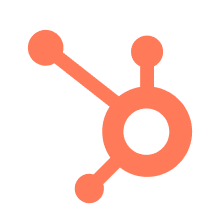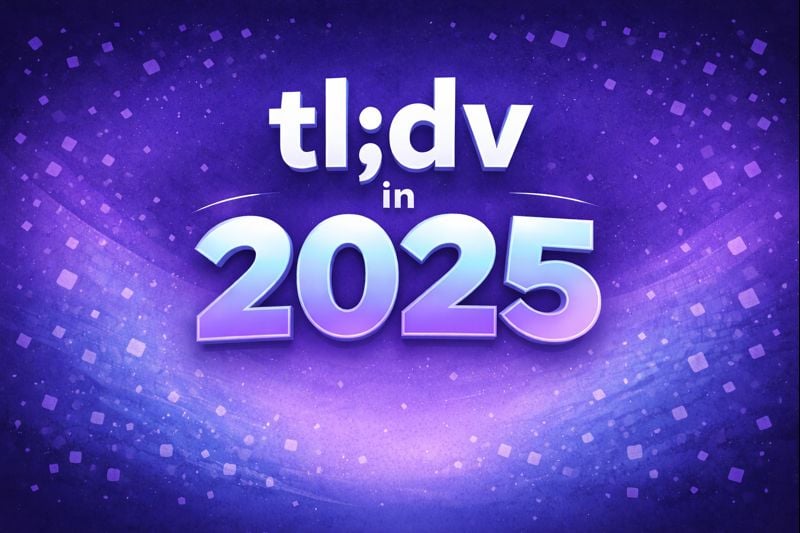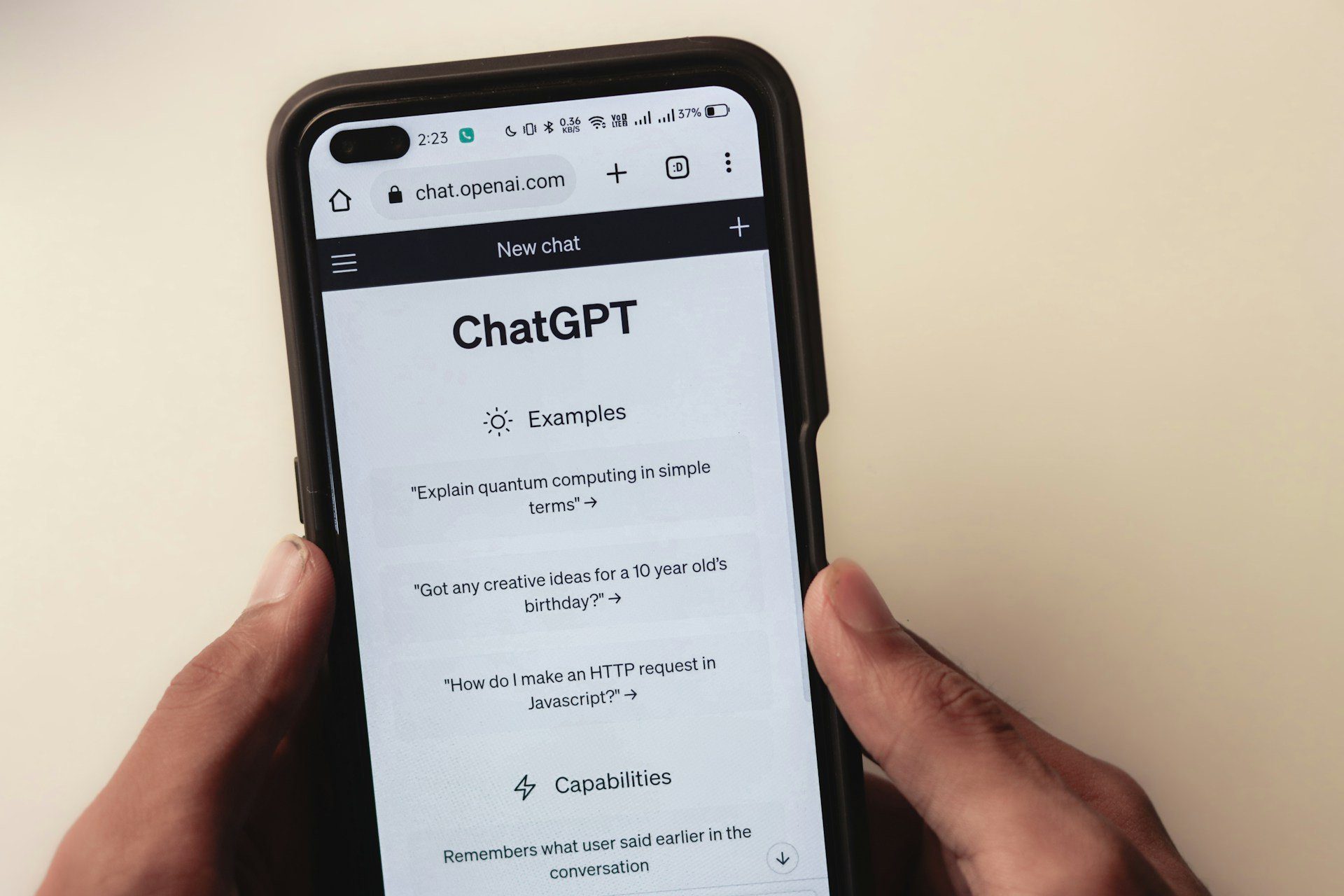In this tl;dv vs Fellow showdown, both stand out as exceptional AI-powered meeting tools, offering advanced transcription, seamless collaboration, and powerful integrations.
However, despite their similarities, key differences set them apart.
In this battle, we will explore these differences across various dimensions, including meeting management capabilities, transcription accuracy, integration options, and more.
By the end of this analysis, you will have a clear understanding of the unique strengths of each platform and which one best suits your needs. Keep reading to find out more.
tl;dr
| tl;dv | Fellow | |
|---|---|---|
| Transcription | 20 🟢 | 15 |
| Recording | 20 🟢 | 12 |
| Conversational Intelligence | 14 🟢 | 8 |
| Automation & Integrations | 10 🟢 | 6 |
| Note-taking | 12 🟢 | 10 |
| Security | 20 🟢 | 14 |
| Coaching | 8 🟢 | 2 |
| Admin | 8 🟢 | 4 |
| Organizational | 12 🟢 | 8 |
| Support | 4 🟢 | 2 |
| Revenue Intelligence | 0 | 0 |
| Other | 6 🟢 | 4 |
| Total | 134 🟢 | 85 |
When comparing tl;dv and Fellow, the results speak for themselves. tl;dv takes the lead with an impressive 134 points, leaving Fellow behind at 85. It particularly excels in key areas like transcription, recording, conversational intelligence, automation, and security.
For teams looking for a complete meeting management solution, tl;dv proves to be a strong choice. It’s especially beneficial for sales and leadership teams that rely on efficient documentation and insights. Plus, with its intuitive interface and generous free plan, getting started is easier than ever. While Fellow has its advantages, it doesn’t dominate in any particular category, making tl;dv the more well-rounded option for those seeking the best AI-powered meeting assistant.tl;dv vs Fellow: 12 Factors to Consider While Choosing the Best AI Notetaker
How do we rank?- We give 2 points to a platform once it is the clear winner or when the capability is equally met by the other.
- We give 1 point when the capability is present, but it’s not a winner.
- We give 0 points when the capability is not present.
Transcription Capabilities
| tl;dv (20) | Fellow (15) | |
|---|---|---|
| Transcriptions included | 🟢 Unlimited | 🟢 Unlimited |
| Real-time transcriptions | 🔴 | 🔴 |
| Languages supported | 🟢 +40 | 🟠 36 |
| Dialects supported | 🟢 | 🔴 |
| Filler word removal | 🔴 soon | 🔴 |
| Speaker recognition | 🟢 | 🟢 |
| Speaker names | 🟢 | 🟢 |
| Transcribe video/audio uploads | 🟢 | 🔴 |
| Export transcripts | 🟢 | 🟢 |
| Clips from transcript | 🟢 | 🟢 |
| Custom vocabulary | 🔴 soon | 🔴 |
| Full-Transcript search | 🟢 | 🟢 |
| Edit transcription | 🟢 | 🟢 |
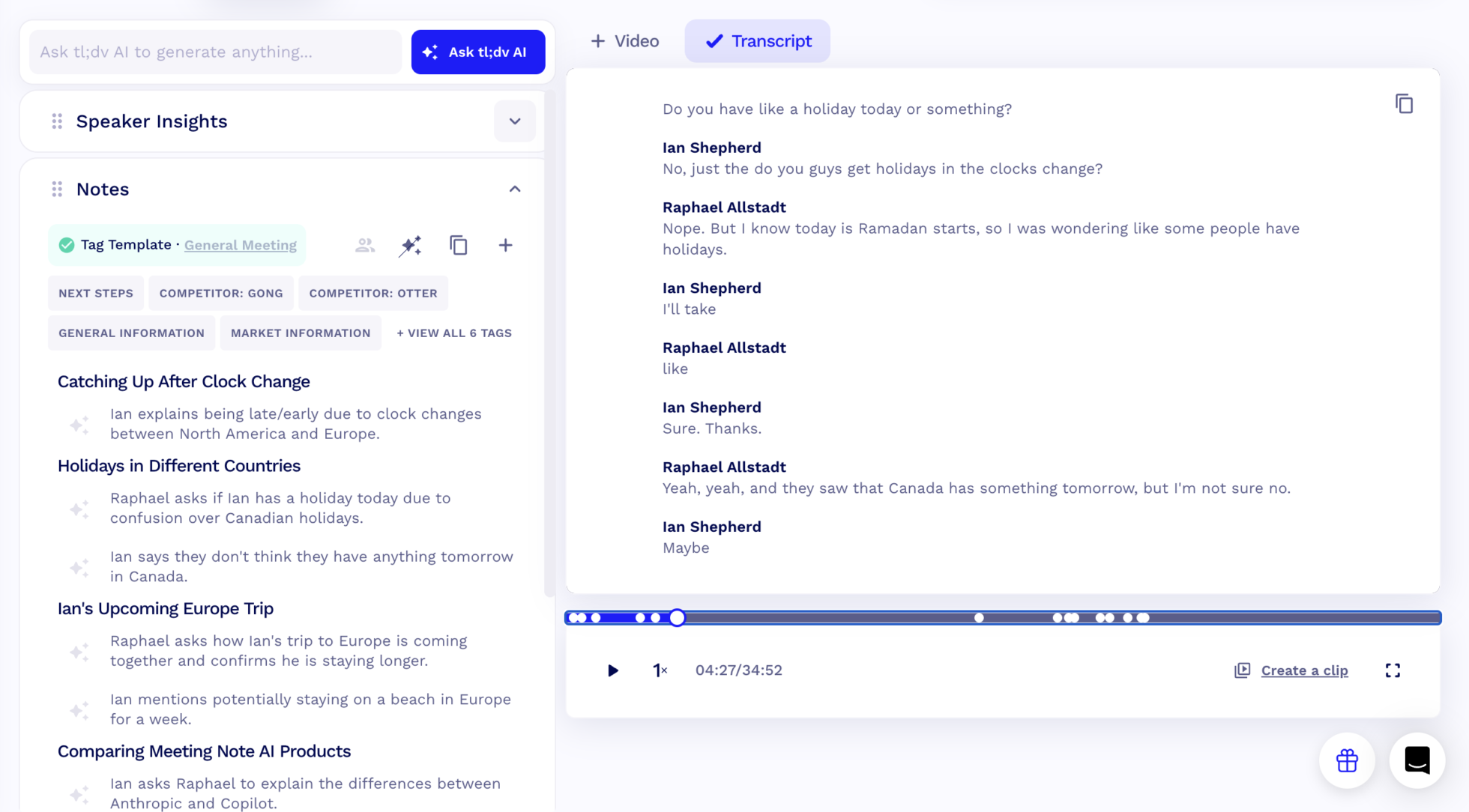

Transcriptions Included
Both tl;dv and Fellow offer unlimited transcriptions, allowing users to transcribe as many meetings as needed without worrying about caps or additional costs. More importantly, both tools offer unlimited transcriptions for free (though Fellow only offers a limited number of recordings).Languages Supported
tl;dv supports transcription in over 40 languages, providing a broad linguistic range that caters to global teams and multilingual environments. In contrast, Fellow’s transcription service is available in 36 languages, making tl;dv the superior choice for users needing transcription services across a wider variety of languages.Dialects Supported
Dialect recognition is a feature where tl;dv excels as it provides enhanced transcription accuracy for users with diverse dialects. The nuances of regional accents are accurately captured with tl;dv, but not by Fellow. This could lead to Fellow’s transcriptions being less precise for speakers of dialects.Filler Word Removal
Neither tl;dv nor Fellow offers filler word removal at this moment. tl;dv plans to integrate this capability in the near future, allowing users to produce cleaner, more concise transcripts by getting rid of unnecessary words and phrases. This marks a future differentiator between tl;dv and Fellow.Transcribe video/audio uploads
tl;dv allows users to transcribe uploaded video and audio files, offering flexibility for transcribing content beyond live meetings. Fellow currently lacks this feature, limiting its utility for users who need to transcribe pre-recorded materials.Custom Vocabulary
tl;dv is set to introduce a custom vocabulary feature, which will allow users to fine-tune transcriptions for specialized fields, industry jargon, or unique terminology. This upcoming addition is particularly valuable for teams in technical, medical, or legal sectors where accuracy is crucial. Fellow, on the other hand, does not currently offer this capability, making tl;dv the more forward-thinking option for users who require tailored transcription precision.Edit Transcription
Both tl;dv and Fellow offer the ability to edit transcriptions, allowing users to correct any inaccuracies and ensure the final transcript accurately reflects the meeting content.
Recording Capabilities
| tl;dv (20) | Fellow (12) | |
|---|---|---|
| Video platforms | 🟢 Zoom, MS Teams, Google Meet | 🟢 Zoom, MS Teams, Google Meet |
| Storage | 🟢 Unlimited | 🟢 Unlimited |
| Records video | 🟢 Unlimited | 🟠 5 free |
| Concurrent meetings | 🟢 Unlimited | 🔴 |
| Download recordings | 🟢 | 🟢 |
| Capture slides | 🟢 | 🔴 |
| Viewing analytics | 🟢 | 🟢 |
| Integrated Calendar | 🟢 | 🟢 |
| Recording Editing | 🔴 | 🔴 |
| Reels | 🟢 | 🔴 |
| Custom Bot Avatar | 🟢 | 🟠 Enterprise only |
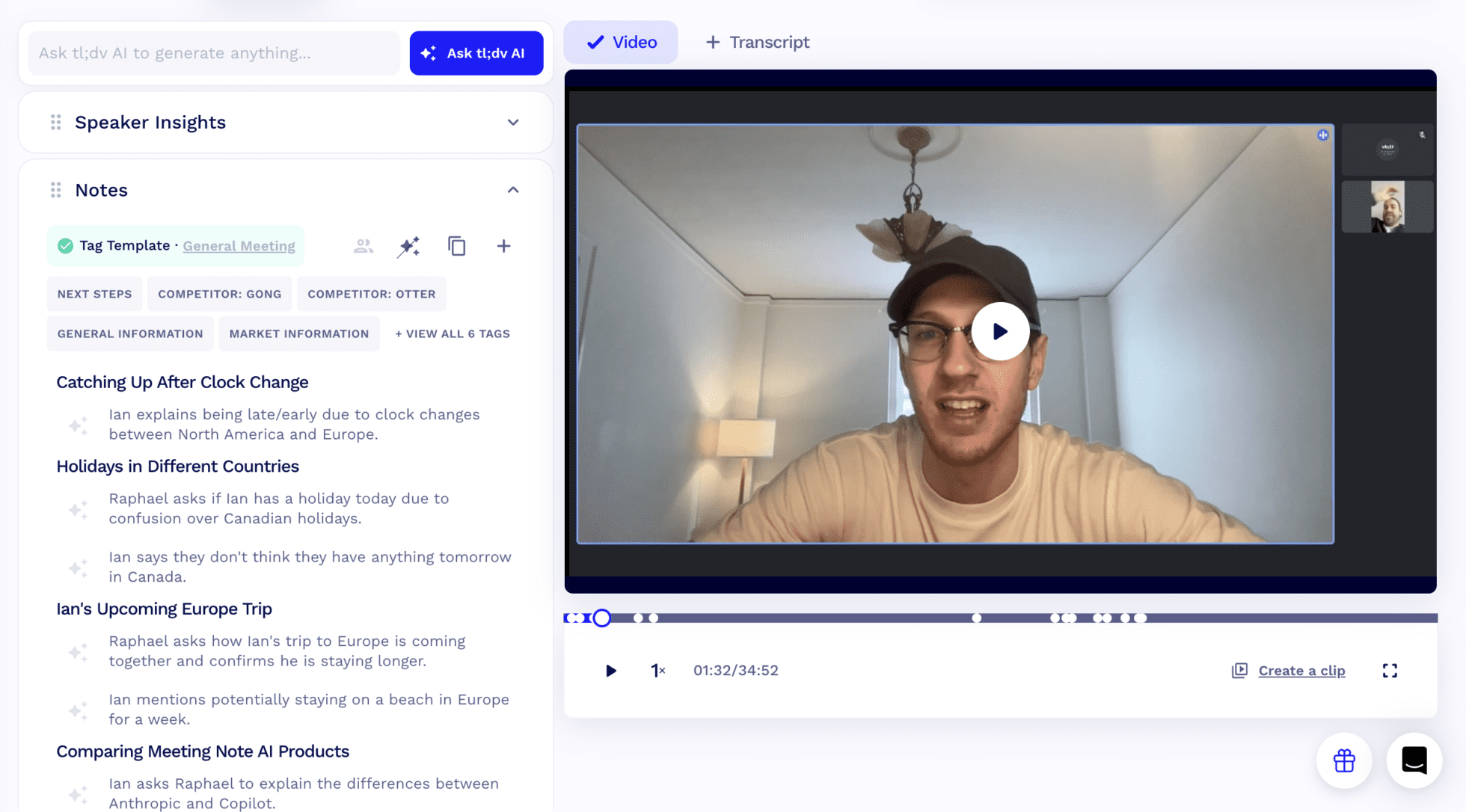
Video Platforms
Both tl;dv and Fellow support Zoom, Microsoft Teams, and Google Meet, ensuring compatibility with the most widely used video conferencing tools. No matter which platform your team prefers, both tools have you covered when it comes to seamless meeting recordings.
Storage Limits
tl;dv and Fellow both offer unlimited storage, allowing users to keep and access past recordings without worrying about hitting a cap. This is a crucial feature for teams that need to maintain an extensive archive of meetings for training, reference, or compliance purposes.
Records Video
tl;dv allows unlimited video recordings, making it ideal for teams that rely heavily on recorded meetings. In contrast, Fellow limits free users to just five video recordings, which may not be sufficient for teams that need to archive meetings frequently.
Concurrent Meeting Recordings
One of the biggest differentiators between these two tools is tl;dv’s ability to record multiple meetings simultaneously. This means large teams can capture different discussions happening at the same time without restrictions. Fellow does not support concurrent recordings, making it less suitable for organizations that frequently host overlapping meetings.
Slide Capture
tl;dv stands out with its slide capture feature, automatically saving shared slides during a meeting. This is a valuable tool for teams that rely on visual presentations, ensuring that key content is preserved alongside the recording. Fellow does not offer this feature, which could be a drawback for presentation-heavy meetings.
Viewing Analytics
Both tl;dv and Fellow provide analytics on recorded meetings, giving users insights into who viewed the recordings and how they engaged with the content. This can be especially useful for tracking follow-ups and understanding team engagement.
Reels
tl;dv features a Reels function that allows users to create highlight clips from recordings, making it easy to extract and share key moments from meetings. Fellow lacks this capability, which means users must manually sift through full recordings to find important segments.
Custom Bot Avatar
tl;dv allows users to customize their recording bot’s avatar, making it a more personalized experience when capturing meetings. Fellow only offers this feature to Enterprise users, limiting customization options for most teams.
Conversation Intelligence Capabilities
| tl;dv (14) | Fellow (8) | |
|---|---|---|
| Single Meeting AI Insights | 🟢 | 🟢 |
| Multi Meeting AI Insights | 🟢 | 🔴 |
| Keyword tracking | 🟢 | 🔴 |
| Sentiment Analysis | 🔴 No, as per EU AI Act | 🔴 |
| Key Topic detection | 🟢 | 🟢 |
| Speech Analytics | 🟢 | 🔴 |
| Action item detection | 🟢 | 🟢 |
| Question detection | 🟢 | 🟢 |
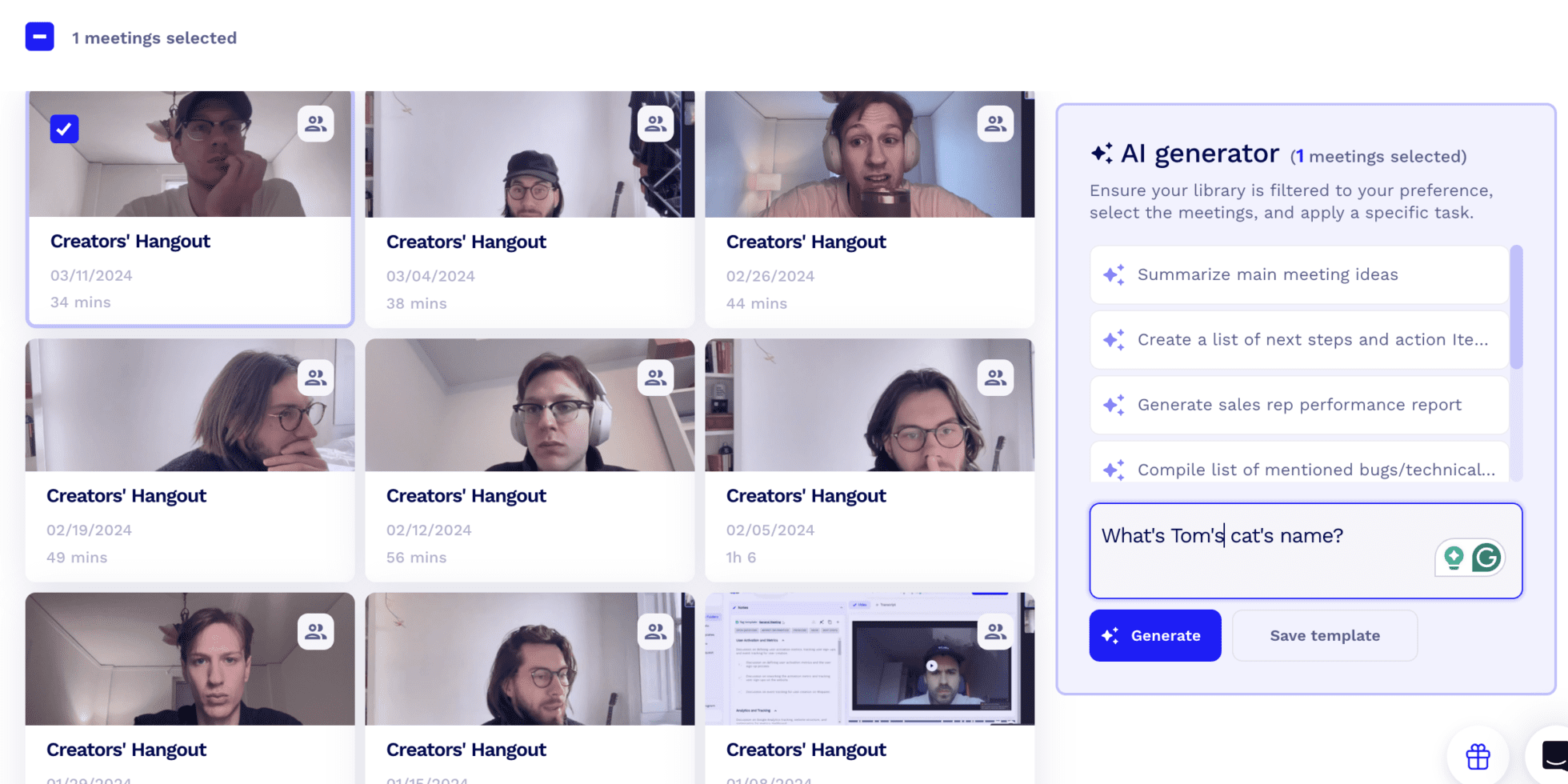

Single Meeting AI Insights
Both tl;dv and Fellow provide AI-driven insights for individual meetings, helping users quickly identify key discussion points, decisions, and action items. This feature is useful for summarizing meetings efficiently without manually reviewing the entire transcript.
Multi-Meeting AI Insights
tl;dv goes a step further by offering AI insights across multiple meetings, allowing users to track trends, recurring discussion points, and long-term action items. This is especially useful for teams that have ongoing projects and want to see patterns over time. Fellow does not provide this feature, making it less effective for long-term analysis.
Keyword Tracking
tl;dv includes keyword tracking, enabling users to monitor specific terms or phrases across meetings. This is valuable for sales teams tracking customer objections, product teams monitoring feedback, or managers identifying key discussion trends. Fellow does not offer keyword tracking, meaning users would need to manually search through transcripts to find relevant discussions.
Sentiment Analysis
Neither tl;dv nor Fellow currently includes sentiment analysis. In tl;dv’s case, this is due to compliance with the EU AI Act, which restricts certain AI-driven analytics related to user emotions.
Speech Analytics
tl;dv provides speech analytics, which can analyze talking patterns, identify interruptions, and track speaking time. This is particularly useful for assessing team dynamics and improving communication efficiency. Fellow does not offer this feature, limiting its ability to provide deeper insights into conversational patterns.
Question Detection
Both tl;dv and Fellow can detect and highlight questions asked during a meeting. This is useful for reviewing Q&A sessions, customer inquiries, or internal discussions that require follow-up.
Automation & Integration Capabilities
| tl;dv (10) | Fellow (6) | |
|---|---|---|
| CRM Integrations | 🟢 in Pro plan | 🟢 in Business plan |
| Email Integrations | 🟢 | 🟢 |
| Zapier Integrations | 🟢 in Pro plan | 🟢 in Business plan |
| Post-Meeting summary email | 🟢 | 🔴 Manual only |
| Schedule Reports | 🟢 | 🔴 |
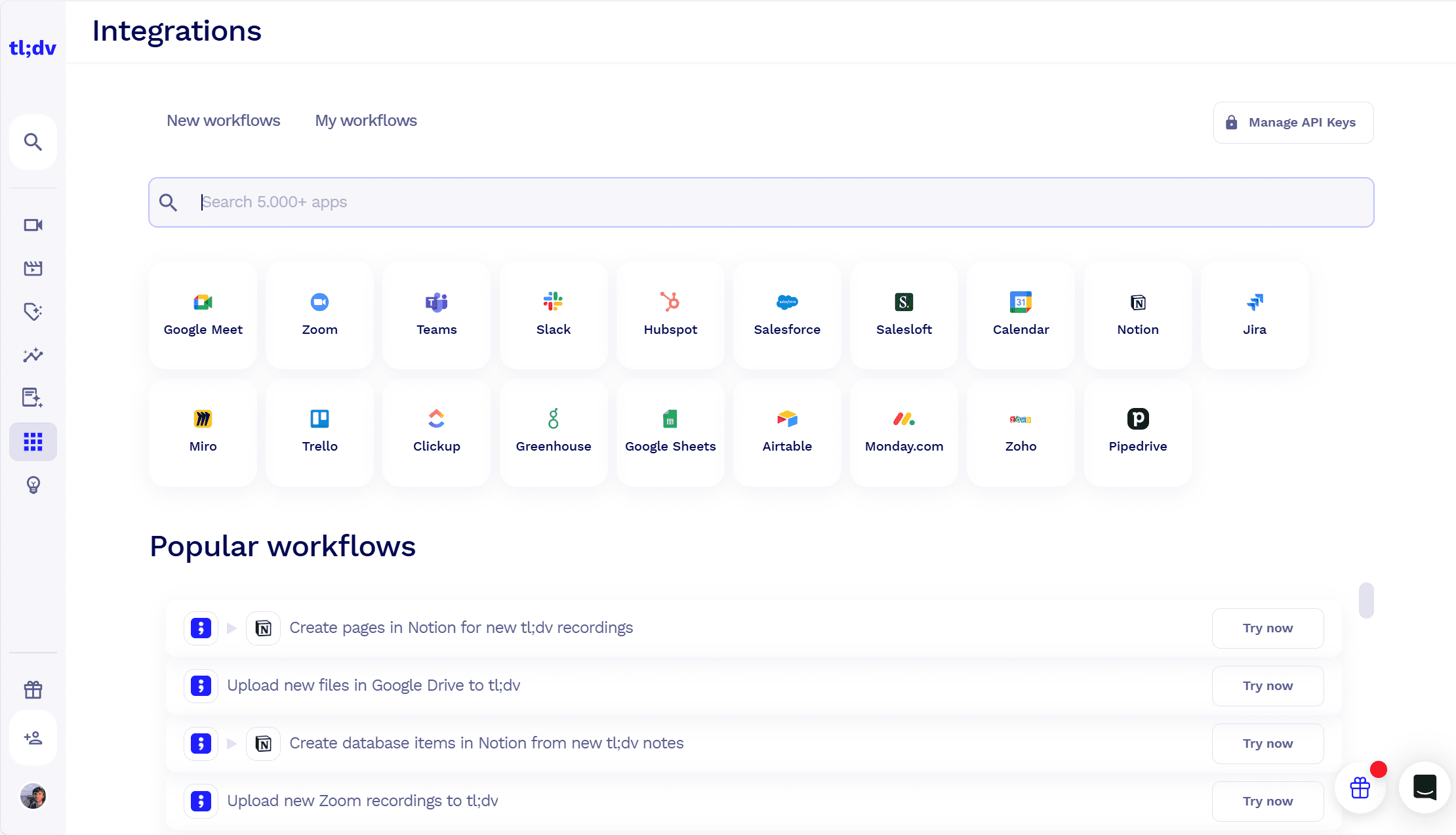

CRM Integrations
Both tl;dv and Fellow offer integrations with CRM systems, allowing teams to automatically sync meeting notes and insights with their customer relationship management tools.
However, tl;dv includes this feature in its Pro plan, while Fellow restricts it to its Business plan, meaning users may need to upgrade to a higher tier in Fellow to access CRM sync.
Zapier Integrations
Both platforms integrate with Zapier, enabling users to connect their meeting insights to thousands of other apps for automated workflows. Just like with CRM integrations, tl;dv includes this in its Pro plan, whereas Fellow requires users to be on the Business plan.
Post-Meeting Summary Emails
tl;dv automatically sends post-meeting summary emails, ensuring that attendees receive key takeaways without extra effort. Fellow, on the other hand, requires users to manually send summaries, adding an extra step to the workflow. This makes tl;dv the more convenient option for teams that want automated follow-ups.
Scheduled Reports
tl;dv allows users to schedule reports, automatically generating and delivering insights at regular intervals. Even better, this is available from the free plan. This is especially useful for tracking meeting trends over time without needing to manually compile data. It’s also great for managers that want to stay on top of their team’s external calls.
Fellow does not offer scheduled reports, meaning users have to generate and review insights on demand.
Note-taking Capabilities
| tl;dv (12) | Fellow (10) | |
|---|---|---|
| AI Notes | 🟢 | 🟢 |
| Manual notes during calls | 🟢 | 🟢 |
| Tag people in notes | 🟢 | 🟢 |
| Assign tasks | 🔴 | 🟢 |
| AI Tags / Bookmarks | 🟢 | 🔴 |
| Comments | 🟢 | 🔴 |
| Custom Meeting Templates | 🟢 | 🟢 |

Manual Notes During Calls
Users of both platforms can take manual notes during meetings, ensuring they can jot down important insights in real time. This feature is useful for adding personal observations or clarifying AI-generated summaries.
Tagging People in Notes
Both tools allow users to tag specific team members in their notes, ensuring that action items or important takeaways reach the right people.
Assigning Tasks
Fellow provides built-in task assignment, allowing users to create action items directly from meeting notes and track their progress.
tl;dv does not currently support direct task assignments, making Fellow the better choice for teams that want a more structured follow-up system within their meeting tool.
AI Tags & Bookmarks
tl;dv offers AI-generated tags and bookmarks, automatically identifying key moments in conversations. This makes it easier to navigate long transcripts and highlight essential takeaways.
Fellow does not provide AI-powered tagging, which means users may need to manually mark important sections.
Comments
tl;dv allows users to leave comments on meeting notes, fostering collaboration by enabling discussions around specific points. This feature is missing in Fellow, meaning users may need to rely on external tools for note-based discussions.
Custom Meeting Templates
Both platforms offer custom meeting templates, making it easier to structure recurring meetings and ensure consistency in note-taking across different sessions. This is also great for syncing meeting data with CRM platforms in the most seamless way possible.
Security Capabilities
| tl;dv (20) | Fellow (14) | |
|---|---|---|
| Data retention | 🟢 6 months on FREE plan Unlimited on all paid plans | 🟢 Unlimited |
| SOC2 Compliant | 🔴 (certification underway) | 🟢 |
| SAML-based SSO | 🟢 Only on Enterprise | 🟢 Only on Enterprise |
| GDPR Compliant | 🟢 | 🟢 |
| EU AI Act Compliant | 🟢 | 🔴 not disclosed |
| Uses your data to train AI | 🟢 (No, your data is kept private) | 🟢 (No, your data is kept private) |
| Private storage | 🟢 Only on Enterprise | 🔴 not disclosed |
| Anonymized sensitive data sent to LLMs | 🟢 | 🔴 not disclosed |
| Meeting data chunking and randomizing | 🟢 | 🔴 not disclosed |
| BAA with LLM providers | 🟢 | 🟢 |
| 0-day data retention policy with vendors | 🟢 | 🟢 |
Data Retention
Both tl;dv and Fellow provide unlimited data retention on their paid plans, ensuring users can store and access historical meetings without limits. However, Fellow offers unlimited storage even on free plans, while tl;dv only retains data for six months for free users. This makes Fellow a slightly better option for users who need long-term access without upgrading.
SOC 2 Compliance
Fellow is SOC 2 compliant, meaning it meets strict industry standards for managing customer data securely. tl;dv is in the process of obtaining SOC 2 certification, but as of now, it has not yet been finalized.
GDPR Compliance
Both tools are GDPR-compliant, ensuring they meet the European Union’s data protection regulations. This is crucial for companies operating within the EU or handling European customer data.
EU AI Act Compliance
tl;dv is fully compliant with the EU AI Act, meaning it adheres to the latest European regulations regarding AI transparency, ethical usage, and data protection.
Fellow, however, has not disclosed its compliance with this new legislation, making it uncertain whether it aligns with the latest AI regulations.
AI Training & Data Privacy
Both tools prioritize data privacy, ensuring that user data is not used to train AI models. This guarantees that meeting conversations remain confidential and are not leveraged for AI development.
Private Storage
Enterprise users of tl;dv can opt for private storage, offering an extra layer of security for sensitive meeting recordings.
Fellow, however, does not disclose private storage options, leaving it unclear whether organizations can manage their data separately.
Anonymized Data Sent to AI Models
tl;dv anonymizes sensitive data before sending it to large language models (LLMs) for processing, enhancing user privacy and preventing identifiable information from being exposed.
Fellow has not disclosed whether it follows a similar anonymization process.
Meeting Data Chunking & Randomization
tl;dv employs meeting data chunking and randomization, further securing sensitive conversations by breaking down and randomizing data before it is processed by AI.
Fellow has not disclosed whether it utilizes similar security measures.
Business Associate Agreements (BAA) with LLM Providers
Both tools maintain BAA agreements with their LLM providers, ensuring that third-party AI systems handle data responsibly and in compliance with security standards.
0-Day Data Retention Policy with Vendors
Both platforms enforce a 0-day data retention policy with external vendors, meaning any shared data is not stored beyond the required processing time, minimizing security risks.
Coaching Capabilities
| tl;dv (8) | Fellow (2) | |
|---|---|---|
| Playbooks Scorecards | 🟢 | 🔴 |
| Custom Playbooks | 🟢 | 🔴 |
| Template Playbooks | 🟢 | 🟢 Enterprise only |
| Objection Handling | 🟢 | 🔴 |

Playbooks & Scorecards
tl;dv provides robust Playbooks and Scorecards, enabling teams to structure their coaching sessions effectively and track progress over time. This feature is completely absent in Fellow, making it less suitable for teams that rely on structured coaching methodologies.
Custom Playbooks
With tl;dv, users can create custom Playbooks, tailoring coaching strategies to fit their specific needs. Whether it’s for onboarding, sales enablement, or leadership training, teams can personalize their coaching process.
Fellow, on the other hand, does not support custom Playbooks, limiting its flexibility for personalized coaching approaches.
Template Playbooks
Both platforms offer Template Playbooks, but Fellow restricts this feature to Enterprise users, while tl;dv provides it to all Business users and above. This means that even smaller teams using tl;dv can take advantage of structured coaching templates without needing an expensive plan upgrade.
Objection Handling
tl;dv includes AI Objection Handling, a feature that helps sales and customer support teams prepare for and respond effectively to common customer concerns. This can be a critical tool for boosting deal closure rates and improving customer interactions.
Fellow does not offer any objection-handling features, making it less effective for coaching teams in high-stakes conversations.
Admin Capabilities
| tl;dv (8) | Fellow (4) | |
|---|---|---|
| Apply auto-record of all meetings in the team members’ calendar | 🟢 | 🟢 |
| Apply auto-share of meetings recorded by team members | 🟢 | 🔴 |
| Prevent Deletion | 🟢 | 🔴 |
| Admin rights over all recordings | 🟢 | 🟢 |
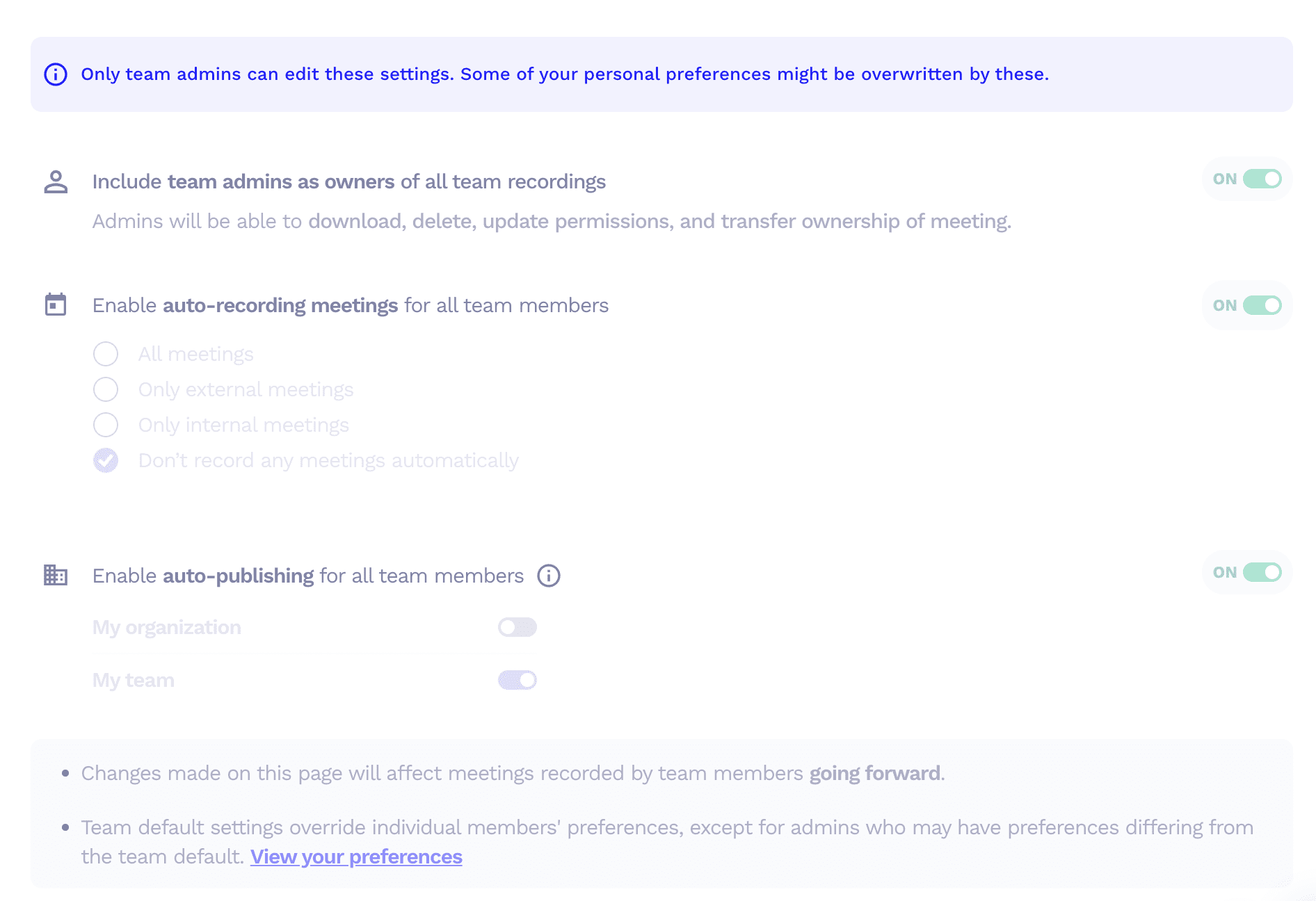

Auto-Recording for Team Meetings
Both tl;dv and Fellow allow admins to enable automatic recording for all team meetings, ensuring that no important discussions are missed. This is a valuable feature for organizations that want to maintain thorough documentation of their meetings.
Auto-Sharing of Recorded Meetings
tl;dv gives admins the ability to automatically share recorded meetings across the team, ensuring transparency and easy access to meeting insights. Fellow lacks this capability, requiring team members to manually share recordings, which can lead to inefficiencies or lost insights.
Preventing Deletion
With tl;dv, admins can prevent users from deleting recordings, adding an extra layer of security and accountability. It prevents bad actors from hiding unprofessional calls and preserves important information for compliance and review.
This feature is completely absent in Fellow, meaning team members have the ability to remove recordings at will. This could be a concern for compliance and record-keeping.
Organizational Capabilities
| tl;dv (12) | Fellow (8) | |
|---|---|---|
| Team Workspaces | 🟢 | 🟢 |
| Meetings Library | 🟢 | 🟢 |
| Smart Filters | 🟢 | 🔴 |
| Global Search | 🟢 | 🟢 |
| Search within meetings | 🟢 | 🟢 |
| Folders | 🟢 | 🔴 |
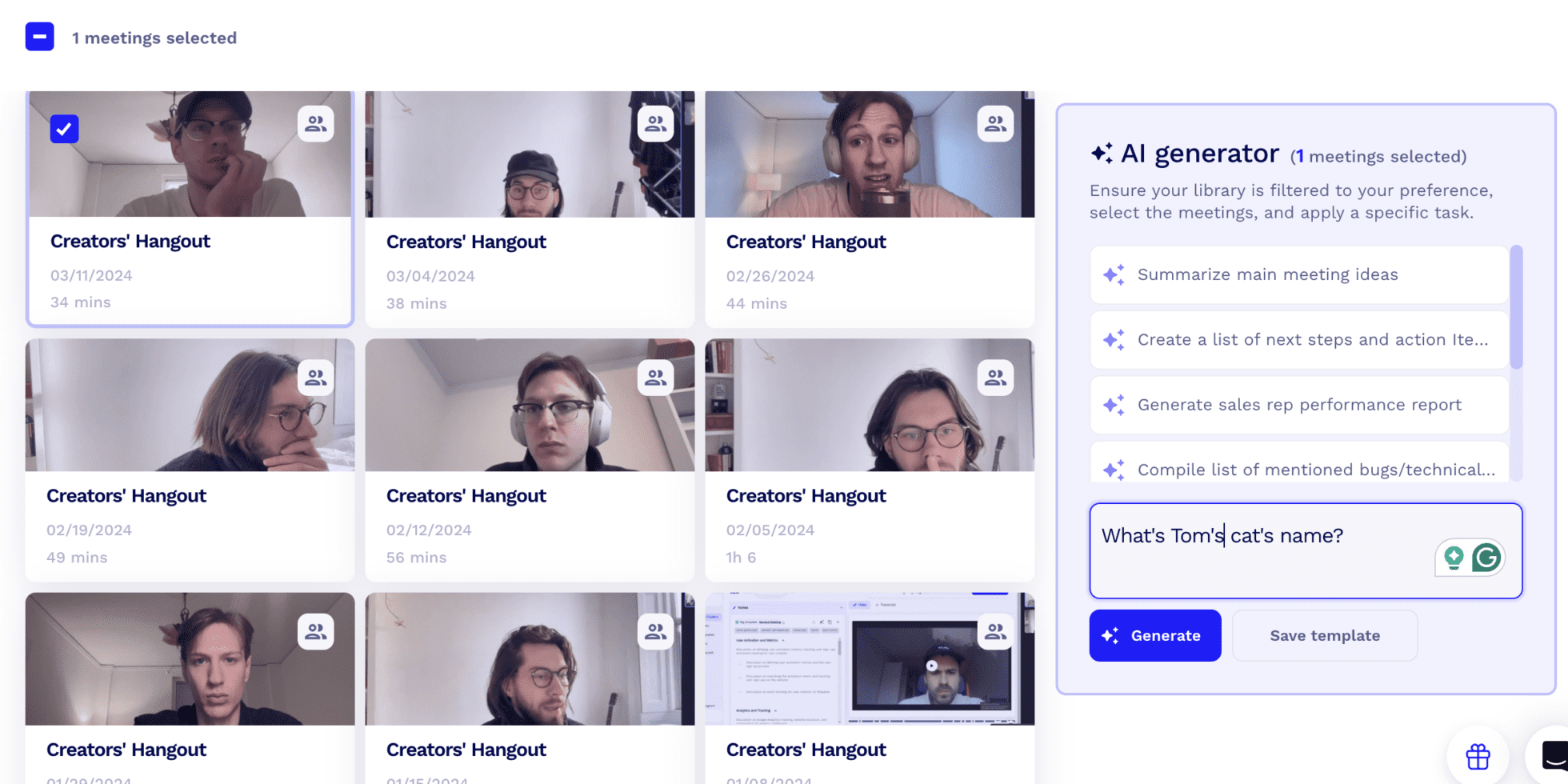
Smart Filters
One of tl;dv’s standout features is Smart Filters, which allow users to quickly sort through meetings based on relevant criteria. This makes it much easier to locate specific discussions without manually combing through numerous recordings.
Fellow does not offer Smart Filters, making it less efficient for users managing a high volume of meeting content.
Global & In-Meeting Search
Both tools support global search across all meetings and search within individual meetings, ensuring users can pinpoint key moments or topics with ease. Users can search for specific moments either in the meeting library or in the meeting itself to quickly and easily find what they’re looking for.
Folders for Organization
tl;dv also provides Folders, allowing teams to categorize meetings into structured collections. This is especially useful for larger teams that need clear organization of their recordings.
Fellow does not have this feature, making it more challenging to keep meetings systematically arranged.
Support Capabilities
| tl;dv (4) | Fellow (2) | |
|---|---|---|
| Support in Free Plan | 🟢 chat & email | 🟢 chat & email |
| Priority Support | 🟢 in Pro plan | 🔴 |
Support in Free Plan
Both platforms provide chat and email support even on their free plans, ensuring that all users, regardless of whether they are paying customers, can access assistance when needed.
Priority Support
Where tl;dv stands out is its priority support for Pro users, ensuring faster response times and a higher level of assistance for paying customers. It also provides dedicated support for Business and Enterprise plan owners.
Fellow does not offer priority support for its Team plan, but Business and Enterprise users do get a dedicated support manager.
Revenue Intelligence Capabilities
| tl;dv (0) | Fellow (0) | |
|---|---|---|
| Forecasting | 🔴 | 🔴 |
| Deal execution | 🔴 | 🔴 |
Neither tl;dv nor Fellow offer Revenue Intelligence features such as Forecasting or Deal Execution.
For teams seeking specialized tools to support sales forecasting or deal execution workflows, additional or alternative solutions would be necessary, as these capabilities are not included in either platform.
Who Is It For?
| tl;dv (6) | Fellow (4) | |
|---|---|---|
| G2 Rating | 🟢 4.7 | 🟢 4.7 |
| Ease of set up | 🟢 Generous free plan + Clean UI | 🔴 Decent free plan + need business email. |
| Localized platform | 🟢 (7 languages) | 🔴 |
| Best suited for whom | 🟢 SMB Sales | 🟢 Mid-market / SMB Sales |
Both tl;dv and Fellow score 4.7/5 on G2, indicating that users are very happy with both tools. They’re made for similar markets too, with Fellow taking on SMB Sales and mid-market, while tl;dv focuses primarily on SMB Sales teams.
tl;dv excels with its ease of set up, empowering users to get started immediately with its generous free plan and clean user interface. Fellow’s free plan is not bad (it does the job if you’re just looking to try it out), but you can only sign up with a business email.
For multinational teams, however, tl;dv is the only serious option. It has a localized platform in seven different languages, making it a fantastic choice for global teams. This means the website is specifically maintained in seven languages, not just arbitrarily translated. Fellow only offers their platform in English, highlighting a significant drawback for international teams.
Verdict: tl;dv vs Fellow – Which One Is the Best?
| tl;dv | Fellow | |
|---|---|---|
| Transcription | 20 🟢 | 15 |
| Recording | 20 🟢 | 12 |
| Conversational Intelligence | 14 🟢 | 8 |
| Automation & Integrations | 10 🟢 | 6 |
| Note-taking | 12 🟢 | 10 |
| Security | 20 🟢 | 14 |
| Coaching | 8 🟢 | 2 |
| Admin | 8 🟢 | 4 |
| Organizational | 12 🟢 | 8 |
| Support | 4 🟢 | 2 |
| Revenue Intelligence | 0 | 0 |
| Other | 6 🟢 | 4 |
| Total | 134 🟢 | 85 |
In the tl;dv vs Fellow showdown, tl;dv emerges as the stronger choice, leading in nearly every category, including recording, conversational intelligence, automation & integrations, note-taking, security, coaching, and admin capabilities. With a total score of 134 points, it offers a well-rounded solution for teams looking for comprehensive meeting capture, advanced AI-driven insights, automation, and robust security features.
Fellow, while trailing with 85 points, holds its ground with strong note-taking features and a focus on meeting organization. It’s a solid choice for teams that prioritize collaborative meeting management, task assignment, and structured meeting templates, even if it lacks some of tl;dv’s advanced automation and AI-powered sales features.
For organizations seeking a full-featured platform that not only records and transcribes meetings but also enhances team performance, streamlines workflows, and prioritizes security, tl;dv is the clear winner. In addition to being a stronger platform overall, tl;dv provides a better free plan so you can get started without jumping through hoops.
Meanwhile, Fellow is better suited for teams that need a lightweight solution centered around structured meetings and collaborative note-taking.
